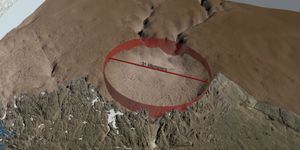HIV Persisting How?
The human immunodeficiency virus also known as HIV is responsible for the weakening of a person’s immune system by destroying important cells that fight disease and infection. As it stands today, there is still no effective cure for HIV. With that being said, there exist proper medical care procedures that can help one to control their HIV infection, the most common of which is known as antiretroviral therapy.
Unlike other viruses, the human body cannot get rid of HIV entirely, even with treatment. So once you get HIV, you have it for life. A study confirms the biological mechanism responsible for latent HIV reservoirs. This study may help to suggest new strategies for a functional HIV cure.
The study published in Nature Communications describes how a majority of the HIV-infected cells that persist in HIV-infected individuals even during suppressive antiretroviral therapy originated from cellular proliferation and not from viral replication as previously believed.
HIV attacks the body’s immune system, specifically the CD4 T cells that help the immune system to fight off infections. If left untreated, HIV will reduce the CD4 T cell count in the body thereby causing the host to be more likely to get other infections or infection-related cancers. As time progresses, HIV can destroy so many of these cells that the body can’t fight off infections and diseases. These opportunistic infections or cancers take advantage of a fragile immune system and signal that the person has AIDS, the last stage of HIV infection.
As the team of scientists reviewed their experiments, they realized that by reducing the cellular proliferation one could help to eliminate the population of infected cells – the HIV reservoir. They hope that this reduction might help lead to a potential cure for the viral infection.
Led by Drs. Dan Reeves and Josh Schiffer in the Vaccine and Infectious Diseases Division at Fred Hutchinson Cancer Research Center, the research team combined mathematical models and immunological insight to understand how the genetic signature of HIV-infected cells could explain their origin.
"Our approach was inspired by ecology," said Dr. Reeves, the study's first author and research associate in the Vaccine and Infectious Disease Division at Fred Hutch. "We adapted tools to characterize the reservoir of HIV-infected cells more realistically, inferring the mechanism of generation from the proportions of unique and identical genetic signatures."
HIV will insert itself into the host DNA of healthy cells. When it does this, there is a unique signature that scientists can detect. This signature would contain unique integration sites and different mutations in the DNA of infected cells. Interestingly, they found that the majority of the signatures were not uncommon, they were identical. This indicates that the persistence within HIV reservoirs is the result of the CD4 T cell proliferation, and not the virus. HIV is being handed down through the DNA of the daughter cells during normal cell replication.
If a reduction in the proliferation of specific immune cells, CD4+ T cells, were to occur, it could significantly deplete HIV reservoirs and potentially lead to a functional HIV cure. Possible approaches for depleting the infected cells might be gene editing, cellular immunotherapy or latency-reversing agents.
Dr. Schiffer, senior author of the study and Associate Member in the Vaccine and Infectious Disease Division at Fred Hutch commented, "We see parallels in achieving functional cures in both HIV and cancer; for example, the difficulties of remission and relapse, and how combination therapies could be successful in bringing either disease to undetectable levels in the body."
Sources: Nature Communications, Science Daily, CDC, YouTube









